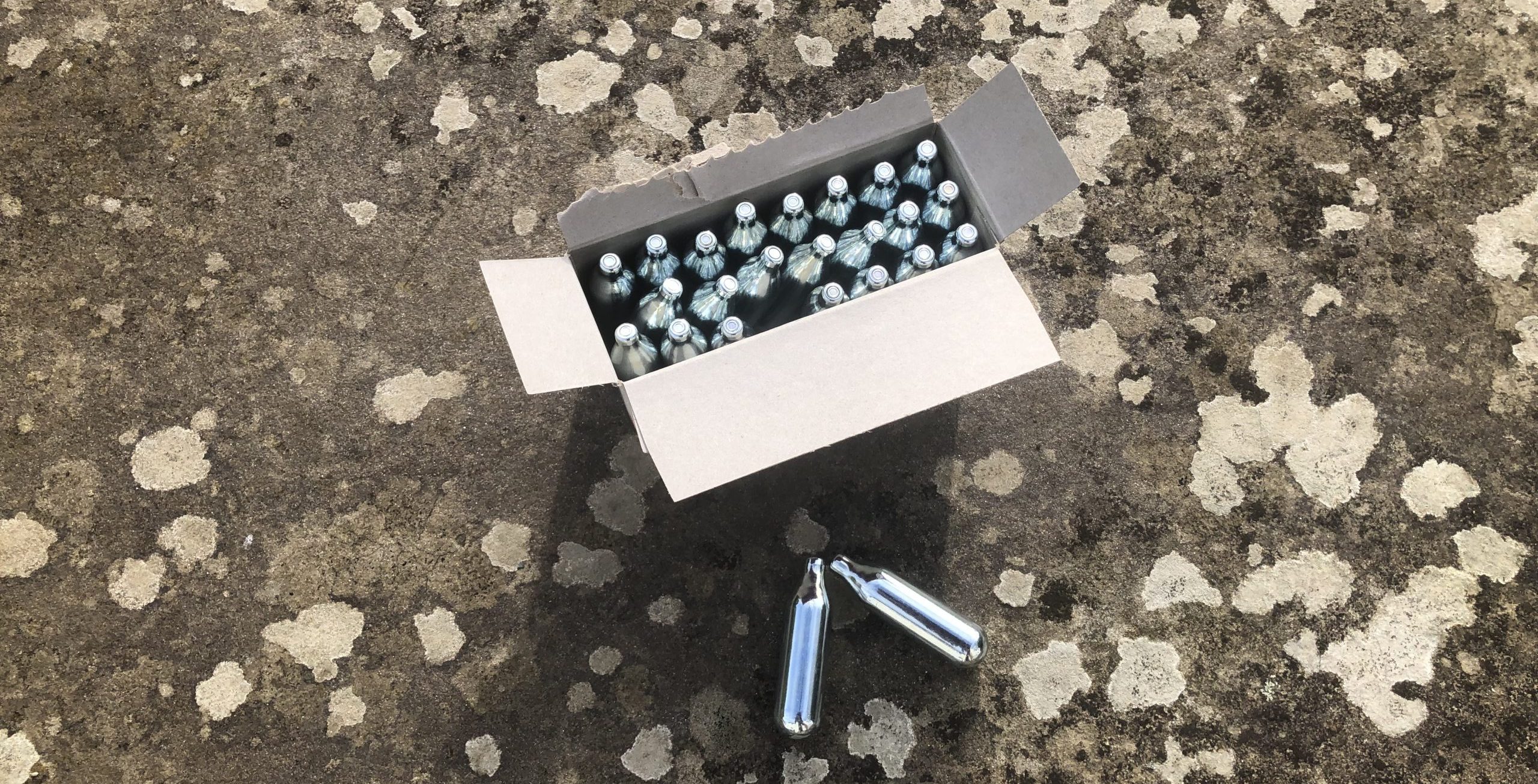 Nada Khan is an Exeter-based NIHR Academic Clinical Fellow in general practice and GPST4/registrar, and an Associate Editor at the BJGP. She is on Twitter: @nadafkhan
Nada Khan is an Exeter-based NIHR Academic Clinical Fellow in general practice and GPST4/registrar, and an Associate Editor at the BJGP. She is on Twitter: @nadafkhan
It is not uncommon to see the little silver canisters scattered around city streets or music festival fields the morning after the night before. Nitrous oxide is a popular recreational drug that produces transient but intense feelings of euphoria and disassociation. It’s cheap, and can be delivered from those ubiquitous silver canisters or distilled inside balloons. The Office for National Statistics (ONS) estimates (and probably underestimates) its use, but reports that nitrous oxide is the second most used drug amongst 16 to 24 year olds in the UK.1 In the year ending in March 2020, the ONS estimates that 796,000 adults aged 16 to 59 had used nitrous oxide in the preceding year.
…nitrous oxide is the second most used drug amongst 16 to 24 year olds in the UK.
Neurologists have recently highlighted what they call an ‘epidemic’ in spinal cord and nerve damage resulting from nitrous oxide misuse. Nitrous oxide oxidizes vitamin B12 into an inactive form, which can lead to B12 deficiency and subsequent demyelination, neuropathy, and subacute spinal cord degeneration amongst other neurological effects.2 A large online drug survey of nitrous oxide use suggests a dose-response relationship of increasing risk of peripheral neuropathy with increasing use of nitrous oxide. While the vast majority of users use nitrous oxide infrequently, as with many psychoactive substances there is a subset of heavy users, and these are the population at risk of significant neurological harm.3 But let’s put this problem into context: heavy use and deaths from nitrous oxide are rare, so some commentators argue that nitrous oxide is a little fish compared to the public health complications of other illicit substances or even alcohol abuse, which killed almost 9000 people in England in Wales in 2000.4
Nitrous oxide is widely used in healthcare for its analgesic properties and in food preparation as a propellant for whipped cream…
The legalities around nitrous oxide are complex. Nitrous oxide is widely used in healthcare for its analgesic properties and in food preparation as a propellant for whipped cream, which makes it difficult to limit its possession or sale. The 2016 Psychoactive Substances Act made it illegal to sell nitrous oxide as an intoxicant, but does not regulate its sale for legal purposes.1 This makes nitrous oxide relatively easy to acquire, and it is widely sold in bulk by online vendors on website such as eBay and Amazon. The Home Office has commissioned a review on the harms of nitrous oxide to explore whether possession for psychoactive use should be made an offence. Given its legal uses it is unclear how a legal framework for criminalising possession would work. And all of this is apart from a wider debate around prohibition, decriminalisation and legalisation of drugs in general.5
So where does that leave us working in general practice? If the ONS estimates are correct, 8.7% of young adults aged between 16 to 24 used nitrous oxide in the year preceding 2020.1 If we extrapolate those figures, there will be a significant proportion of young adults on primary care lists who have tried nitrous oxide. It’s unclear how many of these will be heavy users at levels high enough to cause symptomatic neurological problems, and it will be helpful in future for researchers to compile prevalence data on these serious side effects. A useful Royal College of Emergency Medicine Safety Flash highlights that some of the symptoms of nitrous oxide neurological damage (clumsiness, legs feeling funny) and signs (unsteady gait, depressed reflexes, loss of proprioception) can be subtle. Given the increasing use, it’s worth asking about nitrous oxide abuse in cases of young patients presenting to general practice with vague neurological symptoms.
References
1. Drug misuse in England and Wales: year ending March 2020. Office for National Statistics; 2020.
2. Winstock AR, Ferris JA. Nitrous oxide causes peripheral neuropathy in a dose dependent manner among recreational users. J Psychopharmacol. 2020;34(2):229-36.
3. Kaar SJ, Ferris J, Waldron J, Devaney M, Ramsey J, Winstock AR. Up: The rise of nitrous oxide abuse. An international survey of contemporary nitrous oxide use. J Psychopharmacol. 2016;30(4):395-401.
4. Alcohol-specific deaths in the UK: registered in 2020. 2021.
5. Dalgarno P, ; O’Rawe, S.; Hammersley, R. Illegal drugs in the UK: Is it time for considered legalisation to improve public health? Drug Science, Policy and Law 2021;7.
Featured image: Nitrous Oxide canisters sold as propellant for mousse whipping in catering, Photograph by Andrew Papanikitas, 2022




